The new Labour Government has confirmed that the Royal Navy’s Carrier Strike Group, led by HMS Prince of Wales, will be deployed to the Indo-Pacific region in 2025.
This announcement reaffirms plans laid out under the previous Conservative Government.
The status of the deployment was questioned in a parliamentary question asked by James Cartlidge, Conservative MP for South Suffolk, on 17 July 2024.
Luke Pollard, Parliamentary Under-Secretary at the Ministry of Defence, confirmed on 25th July 2024 that the Ministry plans to proceed with the deployment. “Yes, the Ministry of Defence plans to deploy HMS Prince of Wales to the Indo-Pacific in 2025,” Pollard stated.
Earlier this year, under the Conservative Government, Grant Shapps highlighted the strategic importance of such deployments. He detailed that sending HMS Prince of Wales to the Indo-Pacific was intended to send a strong message against any attempts to undermine the rules-based international order.
“In an increasingly volatile world where we can no longer take peace for granted, it’s critical to stand united with our allies and partners in defence of democracy and freedom,” Shapps had said.
HMS Prince of Wales will lead the UK Carrier Strike Group in a series of operations and exercises, including a port visit to Japan. The mission is designed to enhance defence relationships and demonstrate UK commitment to the Indo-Pacific. Shapps had noted the significance of joint exercises in conveying the UK’s readiness to respond to global threats and support free trade and travel.
This deployment follows the precedent set by HMS Queen Elizabeth, which led the 2021 Carrier Strike Group on a journey covering 55,000 nautical miles from the eastern Atlantic to Japan and back.
During that deployment, the armed forces engaged diplomatically with over 40 nations, underscoring the importance of maintaining a global naval presence.


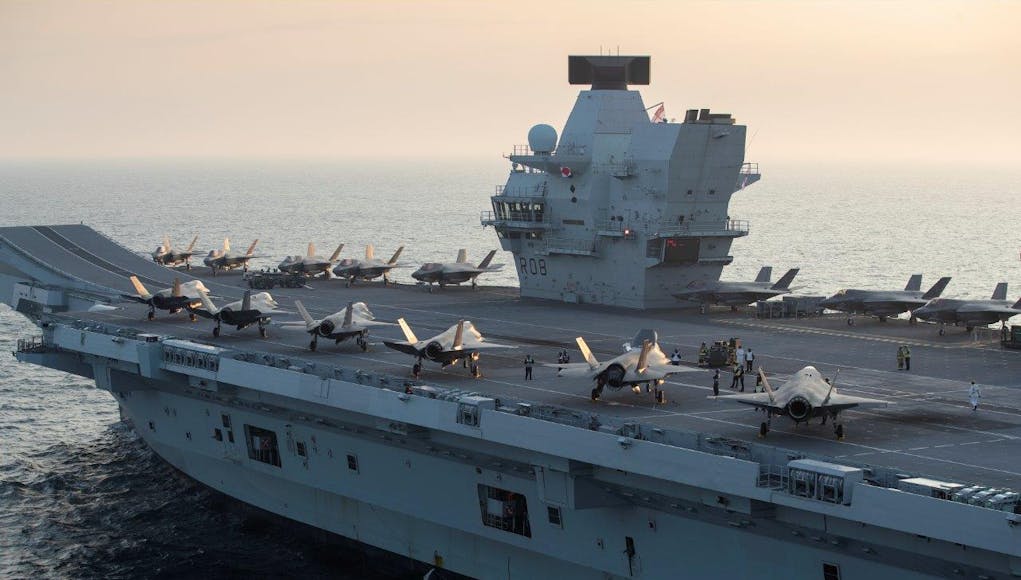


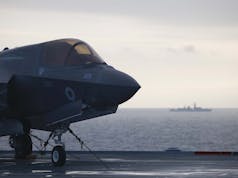
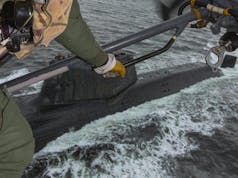

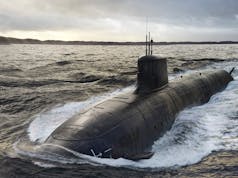


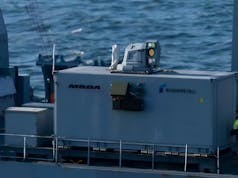


Has it been announced if project Ark Royal is going ahead?
Thing is defining what it is going to launch and where that comes from.
No use putting catapults on the QEC that launch non existent aircraft.
I’d rather focus on get the F35B force up to scratch.
Indeed, getting the two squadrons with all jets, pilots and ground crews…and then maybe thinking about a 3rd…to be honest one of the most potent things that HMG could do is decide it was going to work up to four front line F35 squadrons.
Four F35 squadrons? Have you gone mad? We can barely field two squadrons and will most likely be supplemented by 10 USMC F35″s.
Nothing announced yet, in part the issue is that there is nothing to really launch from a catapult at the moment. MALE UAV’s and Delivery Aircraft don’t need it and the US navy is as far as ever from deploying an operational jet powered drones from a catapult.
MQ25 is so expensive and of such little use we would be better buying osprey.
This might all change but with NGAD being rapidly descoped including the unmanned element and the USN going back to the drawing board and reevaluating F35C I can’t see much happening soon.
The RN is certainly not spending millions and taking the carriers out for years to install catapults with nothing to launch from them. Project Sea Vixen also seems to be kicked into the long grass.
I think we are better off investing in MQ9 and getting an AEW radar onboard as well as long range ISTAR and maratime patrol. Four onboard would be a real game changer and fairly cheap to achieve.
It would be a real vindication of the Queen Elizabeth class design.
You would think that after the Falklands and what it cost , ensuring the carriers have an excellent AEW would be a “ must have” on the admiralty list.
CROWSNEST and the F35’s own radar are pretty effective. Way better than anything we had in 82. No one has the equivalent of a MALE drone providing permanent coverage over the CSG with a long range radar including the USN but it seems like a very useful capability to have to work in coordination with the other radar assets.
To be honest the F35 is a very effective AEW platform in its own right…it’s one of the things that makes it fifth generation…. In reality crowsnest means your not burning your F35 airframe hours and maintaining readiness…
AEW drones are simply not yet a thing..they don’t have the power or the ability to carry a radar with a large aperture…AEW needs a platform with four things..1) that can cart a heavy radar and 2) provide a lot of power as well as 3) having the ceiling and 4) ability to stay in the air..at present drones only have the last two
Correct me if I am wrong . But the F35 has a non gimbling AESA radar. So it can only scan a 60ish degree arc. So yes you could get the aircraft to orbit but that would mean full coverage of the sky would take minutes not seconds.
The only advantage I can see to using an F35 as an AEW is the Low probability of detection . Which would allow the carrier group to remain hidden ( assuming they don’t get tagged by a satellite but one would assume they would try and hide in the weather as much as possible.
Crowsnest was a fine system in its day but is. It really up to the task now and given the increasing threat of hypersonic anti ship missiles. Can a heli get high enough to detect such a threat early enough?
Just my two pence worth!
First, I’m just a thick crayon eater, so take this with a pinch of salt.
However, I think that’s 4th generation thinking so to speak.
If you use 5th Gen fighters as an example, it’s not individual sensors working well in an aircraft that set them apart, it’s essentially a hive-mind approach to situational awareness.
So gone are the days of an individual pilot or crew working out what to do with their sensors – the flight as a whole.
Surely you could take the same approach with a distributed sensor suite held by MALE drones operating from the carrier, each with smaller active and passive sensors covering a large area and working together to build a picture. And like a self forming, self healing network, if you lose a sensor the others move to cover the gap.
That way, you might achieve the same effect as a single (eg) Hawkeye, but not need the power output. I guess there would also be a benefit that you don’t have a single vulnerable platform being shot at by hypersonic AA missiles.
I don’t know, but as a thicko infantryman, it’s the equivalent of putting out standing patrols around a defensive position.
Sadly the swarm of smaller radars doesn’t really work as you’re expecting, unless you have a shed load of them. As you picked the E2D Hawkeye as an example. Its AN/APY-9 is an mechanically rotating UHF (300MHz to 1000MHz) AESA radar. It has a published detection range of 600km (372.8 miles) against a target with 4m2 radar cross section. Which is something like a Su-35 without any weapons or plyons. Which is pretty good and is now a benchmark that only the E7 Wedgetail can match.
A MQ-9 using a Leonardo SeaSpray 7500E X-band (9 to 12GHz) AESA radar, has a published maximum range of 320 nautical miles (592.64km). Which is very impressive, but lacks any context. As Leonardo do not specify the target it can detect at this range. The original Searchwater X-band radar used in the first Sea King AEW had a detection range against a fighter sized target of lot less than 180km. It did get better and Crowsnest which uses an updated version of Searchwater is a lot better. I would predict the Sea Spray could detect a fighter sized target closer to 250km.
With this in mind, you would need a minimum of five (x 5) drones using an X-band radar to cover a similar area to the Hawkeye. Bearing in mind there will still be large gaps between the drones X-band coverage, so its more like 7 drones to cover the area.
The other issue is that you can detect a radar in general terms at least twice as far as it can detect you. So for our example a Su-35 carrying the R-37M ultra long range air to air missile with a published range of 300 to 400km. Can launch the weapon at the platform radiating in X-band, before it is detected by the radar. By contrast, the Hawkeye will detect both the aircraft and the weapon’s launch, long before the Su-35 can get into range to launch.
The MQ-9 at 11m long is too small to carry a longer range radar such as Saab’s S-band AESA Erieye. Where the new Extended range version has a published range of 450km at detecting a fighter sized target. Even then you won’t get the same coverage as the Hawkeye. To carry the Erieye radar, you will need a large platform that can carry the 9m long antenna box. I think the twin engine Eurodrone at 16m long might just be big enough to carry the radar. Though the positioning of the fin might be too close to the radar. But with twin turboprops it should be capable of electrically powering the radar.
The gold plated solution would be to fit the waist cat on our carriers, and buy a load of E2D Hawkeyes. But as we are skint it won’t happen and we’ll end up with a mickey mouse solution, that everyone will then say is better than Crowsnest. Because its mounted on a drone that can be launched and recovered from/to the carrier. Where it can fly higher and longer than a Merlin, which has to be better!
The Falklands War did also prove for that conflict, that a catapult launched AEW platform would have only been available for 30% of the War. As the conditions were either too rough to launch or recover anything but a VTOL or VSTOL aircraft.
I do not disagree however I didn’t say a catapult launched AEW either. I believe a variant of the Osprey was offered to the RN
In the early 90’s, the USN trialed an AEW version of the Osprey. They liked how our Sea Kings were converted to AEW and tried a similar concept. From memory they used the radar from the S3 Viking (AN/APS-137). The idea was to mount the radar on the ramp. Which was then lowered so it was inline with the bottom of the aircraft. Then using an articulated arm, it would lower the radar antenna below the aircraft. Sadly they did not account for the vibrations caused by the airflow on the ramp. Which made the radar fail.
A better method today would be using fuselage mounted AESA panels. Where the aircraft’s vibration would have little effect on the panels, as they don’t contain mechanical switches or moving parts etc. There’s an option to use a large S-band array either side of the fuselage behind the main wing. Which sadly will blank off some views. But it may be better than mounting an antenna on top of the wing.
There is another problem using the Osprey for AEW. The aircraft is not pressurized. Which therefore limits how high the aircraft can fly for any length of time. Meaning the crew have to use either carrier air or linked via flexi hoses to a central air tank. Which therefore limits how long the crew can work
It would still be considerably higher and longer range than a heli mounted AEW.
Given the kill chain that will be required to intercept a hypersonic anti ship. The AEW roll will become even more important.
According to Bell’s blurb, the Osprey can reach and cruise at 25,000ft, which is nearly 10,000ft lower than a Hawkeye. Using the CMV-22N as an example as it has additional internal fuel capacity over the standard version. It has a range of 2130km which should give a duration of at least 6 hours on station. With additional internal cabin ferry fuel tanks. You could increase by another hour. Besides the aircraft is also plumbed for aerial tanking, which will extend the range/duration even further.
There is still the major issue of a non-pressurized cabin. So the aircraft will have to operate below 15,000ft for the crew to operate comfortably, which will be the same for a Merlin. Even then that’s pushing it, as some people struggle immensely to breathe at these heights. Working for 4+ hours with a face mask on is no fun and quite fatiguing.
The answer though would be to modify the aircraft so it could be pressurized.
I was obviously referring to the osprey over a helicopter . Not an Orion which obviously can fly higher for longer as it is a catapulted launched pure jet aircraft. Where the wings provide the lift not the rotors
Interesting to hear your thoughts on why the MQ-25 is “of such little use”. As it it either meets or exceeds the USN’s design requirements.
It will be part of the current strategic defence review. Don’t expect any news before Q2 2025.
Surely this is old “news”? And not necessarily good news. What’s left of the RN can only generate these major deployments once every four years (the entire service career of some junior rates!), and for two years beforehand it completely dominates planning and ship longcasts. A smaller but permanently formed CSG of a carrier, destroyer, frigate and RFA tanker would offer far more flexibility, allowing annual 4-month deployments to say the Eastern Med and Red Sea. Whilst the USN has very notably declined to participate in CSG25, I’m sure it be delighted to help out on these smaller but operationally far more useful deployments.
Do you have anything saying the USN declined to participate in CSG25?
Clearly there won’t be an official press release stating this!
My understanding from contacts is that the then Defence Secretary (Grant Schapps) and the Chief of the Defence Staff (Admiral Sir Tony Radakin) raised the subject with their American counterparts when visiting Washington in January. They were very disappointed to just be given a polite “we’ll think about it”. That was actually a surprise as there had already been some preparatory work to embark a detachment of USMC MV-22’s on PoW for CSG25. The embarkation on QE of the USMC’s VMFA-211 F-35B squadron was arguably the biggest success of CSG21.
You must have some very high up contacts that have managed to gain information that no news source on the planet has.
Of course they are second- and third-hand sources, but probably as good as the newspapers get. When – long ago – I maintained my Navy Matters website I used to get calls from officials at the MOD asking me to remove material (aka “leaks”) that I had been sent by serving RN officers – some indeed very senior.
Hello Richard, was this a UK website or the American one that’s still going ?
We don’t need to deploy ships to the Mediterranean or Red Sea! We have a permanent unsinkable base in Cyprus!
Yes, very hard to see why anyone woukd ever expect a British carrier to be in the Mediterranean on a regular basis given we have two airbases their and literally every country surrounding the Med is a an ally or at the most neutral state.
The carriers are likely more use in the far North Atlantic or Indo pacific which is where the spend most of their time.
Fair play. I for one thought they’d cancel it.
At least we now have some idea of the qualitative difference between Royal Navy and Peoples Liberation Army Navy damage control capabilities….
What damage control has the PLAN been doing?
Saw a tweet showing an old Soviet carrier in China, I think D means that.
Ah, you mean their carrier on fire?!
TBF I think it was Minsk, but yes.
Yes, saw the pics, some conflagration.
It should be pointed out that the Minsk isn’t a serving ship, it was used as a theme park and has been abandoned for years.
I know. And I also saw the jest in Derns initial post.
Speaking off, did you see Iran’s new… uh… thing?
Giving strong HMS Furious vibes, good to know they’ve reached 1917.
What, that Shahad Bagheri “thing”? Saw it on the War Zone. It’ll sink soon enough.
Would hate to land anything on it with the turbulence that superstructure will create.
Yes, big risk of crashing into it as well given the positioning.
Oh well.
The comparison to Furious wasn’t entirely spurious. AAIR she had one succesful landing, then the second attempt resulted in the pilot crashing the plane, the whole thing going over board and the test pilot dying.
Does anyone know if there is a planned voyage itinerary? I’m keen to see if POW will dock in Sydney for a open day.
Me too Klonkie, I live here! Love to see her close up…check out those three CIWS are working…just kidding! 😆
Hey, Auckland’s harbour, even Tauranga’s not too bad either!
An Auckland visit would make my year! No doubt it would be spoilt by the Green Party protesting some or other issue,😆
Have a go with a drone?
Test the reaction times of the officers on watch?
Morning Q. If that happens I’ll be there for sure. We should catch up for a pint in Sydney if all goes to plan!
Good to see it’s still happening, would be a shame if the USMC didn’t embark again though, a perfect chance to put the crew and capabilities of the carrier to test. Would be good to see 36 F35’s for the first time.
Not sure if there is enough sustainable green fuel though.I heard the Chinese are a bit funny about emissions 😂
If the CSG is to transit the Suez and Persian you wouldn’t want to spell out the itinerary too well in advance. You’d think some ships and at least 1 subs would be deployed in the PG-Indo Pacific well beforehand. It’ll be interesting to see what upgrades can get done to the T45s and carriers beforehand.
Good to see this deployment going ahead. There are still some questions and things that I would like to see with the deployment. The main question would be will RFA Fort Vic be ready for it. The second question would be, will there be any test and evaluation for example Mojave with sonar bouy pods, rolling landings for the F35-Bs etc. Then the standard question of how many combat aircraft will be on board. It would be good to see two sqns of UK based F35Bs and one either of USMC or a multi national one made up of USMC/Italian/Japanese. That would give 36-40 combat aircraft and a real test for the ships crew. It would be good to see either Albion or Bulwark possibly even HMAS Canberra meet up for Amphibious landings. As that is how the carrier would operate in wartime.
Apart from that good luck and hope the folks do the RN proud.
Talking about aircraft numbers ,just reading yesterday the Italian navy carrier Cavour has a mix of 7 AV-8B Harriers and 6 F-35Bs plus it’s Helicopters which at present gives it the strongest punch in the European union .
Presumably needing the entire available RN fleet to escort her? Will there even be a single SSN? Until the availability levels are greatly improved, the CSG is a demonstration of weakness not strength. Complete waste of effort.
To address the elephant in the room. Not sure there will be any RFA ships with crews on them at this rate, so not sure where the carrier will be getting logistical support from unless its a multinational task group.
IT’S looking that way
The RN seems to have made a conscious decision to prioritise the number of T45’s in active service by late 2024 to what may well equal an all-time high of four units, but at the cost of not having enough sailors to recommission Bulwark. This seems a reasonable decision given events in the Eastern Med and Red Sea, as well as the need to find at least one and ideally two destroyers for CSG25, however the underlying and now decade long problem of how to increase the number of trained personnel remains.
Crazily the RN issued compulsory redundancy notices to over 1000 trained officers and ratings in 2013, two years later it was laying-up warships due a lack of sailors.
CSG25 will participate in the Australian-USA run Exercise Talisman Sabre 2025, scheduled to be held April 8-12 2025. This is interesting as: (1) it indicates that at least some ships (and probably a submarine) in the strike group will visit Australian ports, and (2) the deployment will need to commence by February 2025 in order to make this date.
what ships are going to be there
How many USMC F-35B’s are going to supplement us this time?